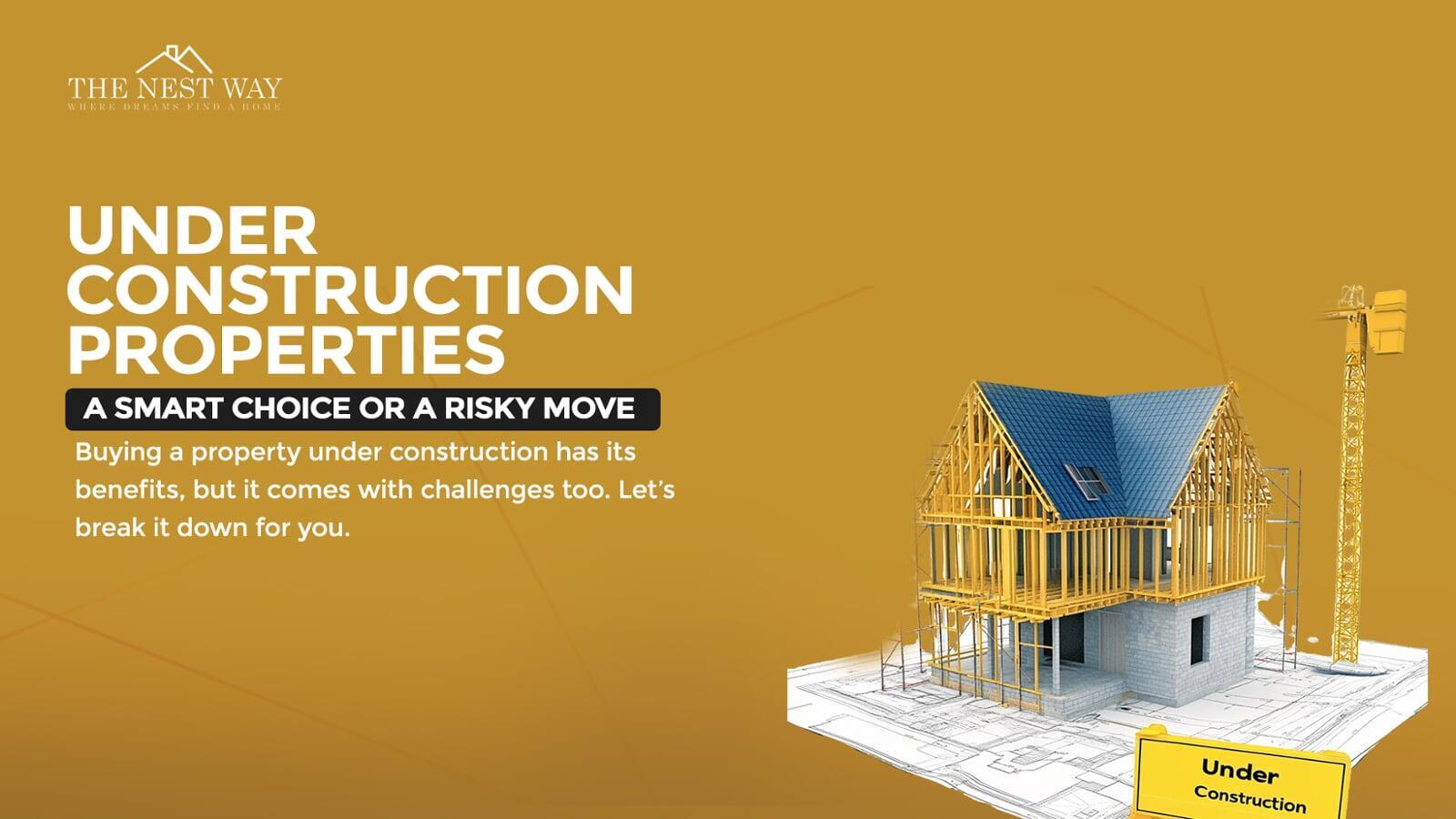An under-construction property offers both advantages and disadvantages.
The purchase of an under-construction property brings with it several attractive opportunities, though it also presents some unavoidable challenges. Such properties, generally marketed as affordable, customizable, and worthwhile, allow the buyer to have other modern amenities, but one cannot ignore their pitfalls like delays and uncertainty over cost estimation. Here, we take a detailed study of the advantages and disadvantages of an under-construction property investment with a clear picture to guide your decision.
➤Advantages of Under Construction Properties
Under-construction properties are very much in demand as they offer the buyer both financial and lifestyle benefits.
1.Lower procurement costs
The cost of under-construction properties is generally much cheaper than that of fully-constructed homes. Such apartments consistently draw in the majority of budget-conscious homebuyers. Furthermore, early-phase buyers benefit from pre-launch offers and flexible financing options.
2. Flexible Payment Scheme
Developers typically offer a staggered payment scheme based on the milestones reached during the construction process. This will reduce financial pressure and help buyers take a phased-out payment strategy.
3. Freedom of Customization
Under-construction real estate properties allow their customers to personalize certain features, such as flooring, wall colors, and fixtures, to a degree that suits their taste.
4. Better return prospects
Investing in an under-construction property located in a developing locality is beneficial in terms of capital appreciation when the project is complete. Early investors get a better return compared to ready-to-move properties.
5. Access to Modern Amenities
New developments frequently offer state-of-the-art amenities such as smart home technologies, landscaped gardens, and wellness centers, which may not be available in older properties.
6. RERA-Ensured Transparency
With the RERA in place, under-construction projects are transparent, and adherence to timelines is mandatory, while developers guarantee correct and complete project details.
7. Lower Maintenance Costs
Currently, new construction with new materials and fittings reduces the requirement of quick repairs or maintenance costs upon possession.
8. Moratorium Period
The moratorium period, or pre-EMI, usually lasts for up to 18 months, or until one month after the date of possession, whichever is earlier.
1. You pay only the interest on the disbursed amount of the loan during this period.
2. Once the construction is complete and you receive possession, you start paying the full EMI, which includes both principal and interest.
➤Disadvantages of Under-Construction Properties
Though the advantages of under-construction properties are very attractive, the disadvantages require critical attention to avoid financial and psychological stress.
1. Possession Delays
Delays from funding issues, regulatory checks, or unforeseen problems can extend possession times. Clear communication and proactive solutions from real estate professionals are essential to keep buyers informed and minimize inconvenience.
2. Financial insecurity
If the developer fails to complete the project in time the buyers, who most likely took out a home loan, will face significant losses.
3. No possession at the earliest
While the ready-to-move-in houses provide possession immediately, the under-construction homes keep the buyer pending for months or even years before they can shift. This can be convenient for some who want to shift on a month.
4. Quality Issues
No matter how hard it tries, the final property may not live up to the claims of quality standards, presentation, or amenities sold to the buyer.
5. Hidden Charges
Government policies change frequently, so buyers must pay levies for many kinds of services, charges, or registration, which the developer usually does not disclose at the onset.
6. Legal and regulatory issues
Legal disputes, lack of clearances, and approvals have stalled the projects, resulting in half-built homes for the buyers.
7. Market Risks
The real estate market is usually volatile. The property's value may decrease during construction, thereby reducing the project's returns.
8. No inspection capacity
Since the property is under construction, the buyers cannot inspect the final product. They are only able to rely on the project brochures and layouts, which can provide them with a limited understanding of the property.
9. Resale Difficulty
An under-construction property is always cumbersome to sell, as people like to buy ready-made properties. Resale also becomes difficult because buyers cannot judge the actual result of the project.
➤How to Reduce Risks on Under-Construction Properties
Under-construction properties are fraught with numerous genuine risks. However, we can reduce most of these risks with proper planning and due diligence.
1.Select a Reliable Developer
Examine the developer's credibility and conduct a background study by visiting completed constructions and reading reviews. Some builders have transparency and accountability. Such builders carry RERA registration.
2. Legitimacy Approvals
Ensure that legal approvals are met.
Check if the projects have legal clearances for land title, environmental, and construction permissions.
3. Optional: the construction-linked payment plan
Avoid paying a high up-front lump sum. Payment plans are based on the project's progress. A good construction planning and execution can help reduce delays.Construction can assist in mitigating delays.
4. Read the sale agreement
Check out the sale agreement carefully; pay most attention to the penalty terms if a delay or material change occurs.
5. Follow the construction progress
For instance, constant visits to the site will keep you updated about the progress; thus, work is always in line with agreed timelines and quality standards.
➤Frequently Asked Questions
• Advantages of an under-construction property?
Under-construction properties offer contemporary comforts and the opportunity for personalization, all while contributing to capital appreciation.
• How can one minimize risks from the under-construction property?
Before making an investment, conduct thorough research, shortlist projects for RERA compliance, and obtain all required legal permissions.
• Is it better to hold onto the under-construction house or a ready-to-move-in house?
Both have their pros and cons. Under-construction properties are less expensive, but they come with associated risks. Where ready-to-move homes give the benefit of possession, their cost is higher.
• What are the financial risks related to under-construction properties?
Risks entail project delays, higher cost escalations, and even the possibility of complete loss in case the developer is unable to complete the project.
• Why is RERA pertinent to under-construction properties?
RERA gives more transparency, brings accountability to developers, and provides structured dispute redressal machinery for buyers.
➤Conclusion
Under-construction property has many benefits, including the idea of affordability, customization as per individual needs, and long-term high valuation. Still, it would not make sense to let loose its potential risks like delay and inferior construction quality. Be assured that we The Nest Way will help you decide with confidence and clarity.
Looking for your first home or to invest? Our team provides one-on-one expertise to guide you to the best fit for your investment and goals. Take the next step with The Nest Way toward realizing your real estate investment journey to its fullest potential. Let us help make your dream house come true!


